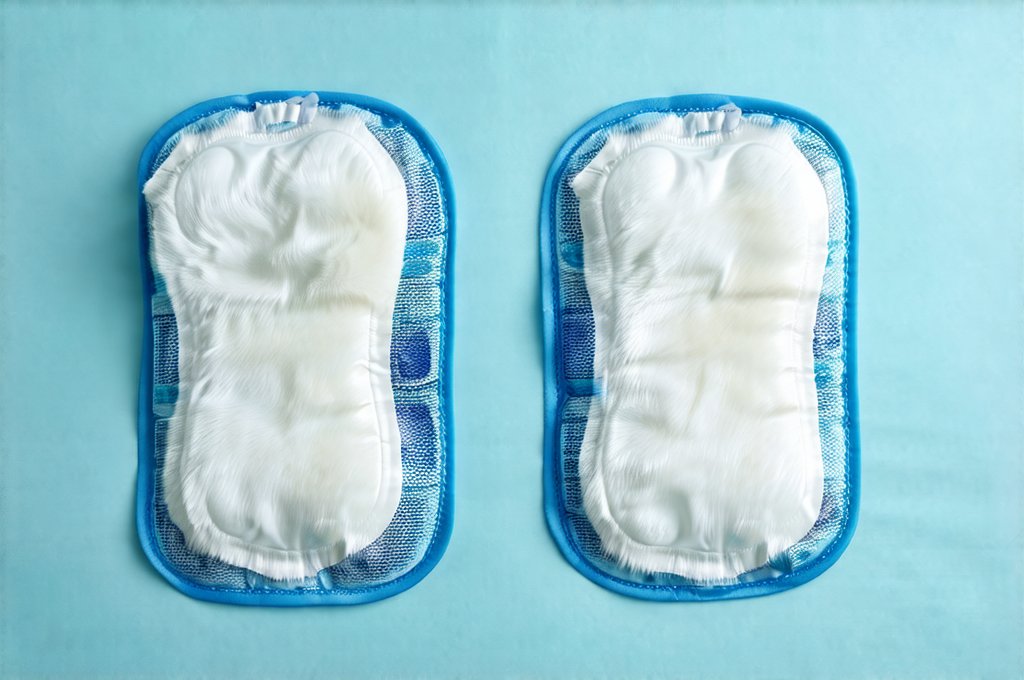Bladder pain can be debilitating, significantly impacting daily life. It’s a common symptom experienced across various conditions – from urinary tract infections (UTIs) and interstitial cystitis (IC), often called painful bladder syndrome, to pelvic floor dysfunction and even referred pain from other areas of the body. Finding effective relief is paramount for those suffering, leading many to explore readily available options like heating pads. The appeal lies in their accessibility and perceived ability to soothe discomfort. However, applying heat to this sensitive area isn’t always straightforward, and understanding when it’s appropriate – and when it might be detrimental – is crucial.
The question of whether you can use heating pads for bladder pain isn’t a simple yes or no answer. It depends heavily on the cause of the pain, the type of heating pad, how it’s used, and your individual health circumstances. While heat therapy can provide temporary relief for certain types of muscle tension and discomfort associated with bladder issues, it’s essential to approach its use cautiously. Incorrect application or using a heating pad when it’s contraindicated could potentially worsen symptoms or even lead to complications. This article will delve into the nuances of using heating pads for bladder pain, exploring safe practices, potential risks, and alternative approaches to managing discomfort.
Understanding Bladder Pain & Heat Therapy
Bladder pain is often complex, stemming from a variety of underlying causes. As mentioned previously, UTIs present with acute, burning pain during urination, while interstitial cystitis involves chronic pelvic pain that isn’t necessarily linked to infection. Pelvic floor dysfunction can cause radiating pain and pressure, and some conditions manifest as referred pain, meaning the discomfort originates elsewhere but is felt in the bladder region. Therefore, understanding the root of your pain is essential before attempting any self-treatment method, including heat therapy.
Heat therapy works by increasing blood flow to the area, which can help relax muscles, reduce spasms, and alleviate discomfort. It’s often used for muscle strains, cramps, and chronic pain conditions like arthritis. In the context of bladder pain, a heating pad might offer relief if the pain is related to muscle tension in the pelvic floor or surrounding areas. However, inflammation is frequently a component of many bladder pain conditions – particularly IC and UTIs – and heat can sometimes exacerbate inflammation, making symptoms worse for some individuals. This distinction between muscle-related discomfort and inflammatory processes is key to understanding appropriate use. If you suspect a UTI, it’s always best to consult with your doctor before attempting any self-treatment methods; they might recommend exploring essential oils alongside conventional treatments.
It’s important to remember that heating pads address the symptom (pain) but not the underlying cause. They are a palliative measure, meaning they provide temporary relief, rather than a cure. Furthermore, relying solely on heat therapy without addressing the root cause of your bladder pain can lead to prolonged discomfort and potentially delay proper diagnosis and treatment.
Types of Heating Pads & Safe Usage
There’s a wide range of heating pads available, each with its own characteristics and safety considerations. Traditional electric heating pads utilize electrical coils to generate heat, while microwaveable or gel-filled pads rely on retained heat. Moist heat – achieved through damp towels or specifically designed moist heating pads – is often preferred as it penetrates deeper into tissues compared to dry heat. Regardless of the type, several safety precautions should always be followed.
- Temperature Control: Always use a heating pad with adjustable temperature settings and start with the lowest setting. Gradually increase the heat if needed, but avoid using excessively high temperatures that could burn the skin.
- Time Limits: Limit application to 15-20 minute intervals, with breaks in between. Prolonged exposure can lead to skin irritation or burns.
- Skin Protection: Never apply a heating pad directly to the skin. Always use a towel or cloth barrier to prevent burns.
- Hydration: Staying well-hydrated is essential, as heat therapy can sometimes cause dehydration.
Specifically for bladder pain, positioning is crucial. Applying the heating pad above the bladder area – on the lower abdomen – is generally recommended. Avoid direct application over the bladder itself, especially if you suspect an infection or inflammation. If your pain radiates to other areas, such as the back or hips, you can adjust the placement accordingly, focusing on relieving muscle tension in those regions.
Identifying When Not To Use a Heating Pad
There are specific scenarios where using a heating pad for bladder pain is strongly discouraged:
Acute Infections & Inflammation
If your bladder pain is due to an active UTI or significant inflammation (as confirmed by a healthcare professional), heat can worsen the condition. The increased blood flow could potentially facilitate bacterial growth in the case of an infection, and the heat itself might exacerbate inflammatory processes. Always consult with a doctor before using heat therapy if you suspect an infection. It’s also important to rule out other causes through something like a dipstick test, if necessary.
Skin Sensitivities & Medical Conditions
Individuals with diabetes, neuropathy (nerve damage), or poor circulation should exercise extreme caution when using heating pads. These conditions can reduce sensation and increase the risk of burns. Similarly, avoid using a heating pad if you have skin sensitivities, open wounds, or recent surgery in the area.
Pregnancy
Pregnant individuals should generally avoid prolonged use of heating pads, especially on the lower abdomen, as it could potentially affect fetal development. Always consult your healthcare provider before using any heat therapy during pregnancy.
Bladder Dysfunction & Unknown Causes
If you have known bladder dysfunction or if the cause of your pain is unknown, it’s essential to seek medical evaluation before attempting self-treatment with a heating pad. Incorrect application or use could potentially worsen underlying conditions or mask important symptoms that require professional attention. In some cases, hormonal therapy might be considered as part of a broader treatment plan.
Ultimately, using a heating pad for bladder pain requires careful consideration and personalized assessment. It’s not a one-size-fits-all solution, and prioritizing safety and seeking medical guidance are paramount to ensuring its appropriate and effective use. Remember, this article provides general information and should not be considered medical advice. Always consult with a qualified healthcare professional for diagnosis and treatment of any health condition.





















